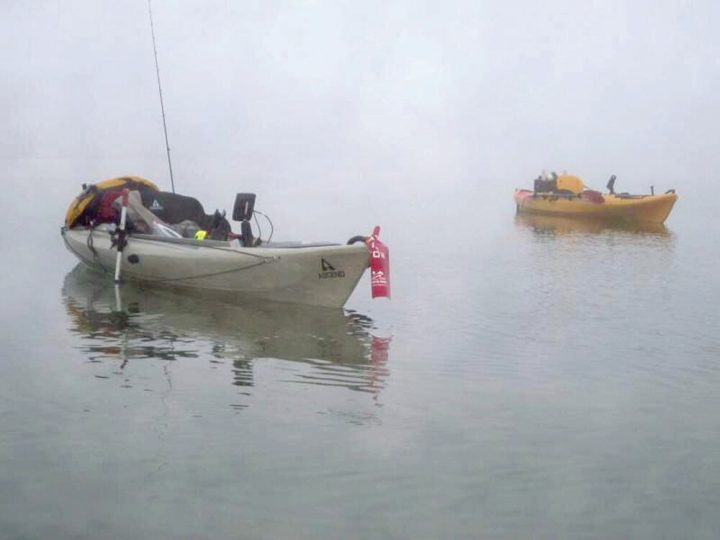
By Kenny Thompson and Brian Allen:
Kayak fishing is different than fishing from a boat. With a boat you can pull anchor and move more easily. With a kayak, doing your homework a couple days before you go is very important. You can paddle out and grind for hours, but if you’re not at the chosen location when the optimal tides are moving, you’re just practicing for when you’ve got your stuff together. Wade fishing from a kayak is another way to maximize your ability to stay in the best fish-holding structure longer, especially with strong April winds.
Once you have a grasp on weather, moon, tides and feeding times, it’s time to select where you’re launching from and how far you’ve got to paddle to get to your chosen wade-fishing destination. I prefer matching the wind forecast against a good topographical bay map and then zeroing in on the areas using Google Earth satellite images. You can find “areas within areas,” and this is where your sweet spots will be. From a planning perspective, areas with the desired bottom makeup (mud and shell, shell reef, or sand and grass), marsh drains, or shallow water next to deep water are what I always key in on.
Once you’ve matched weather and tides to a place you want to wade, and of course a kayak with all the needed safety equipment, you’ll need an arsenal of baits. Selection is important to kayak anglers because there is less storage room in the boat. I prefer fishing with artificial lures and try to pack lightly, thinking through what the conditions might be and what I’ll need. Plus, carefully choosing a few plugs and tails will also make you a much more proficient angler. I always have leader material, assorted jig heads in a few weights and sizes, some swim-style plastics and a few straight-tailed varieties. I prefer to have a few lighter or natural colors in each as well as some darker or brighter options. And if it’s still close to cooler water temperatures, less than 75 degrees, I’ll definitely have some Paul Brown MirrOlure creations. Match the hatch. The classic 51 and 52 Series by Mirrolure, along with various MirrOdines are always welcome in the box. Add a couple topwaters, and that should be plenty.
Securely anchoring the kayak is probably equally as important as planning where you are fishing. You want it to be there waiting for you when you are done fishing. I use a small Danfoth anchor with a couple feet of chain and 30 to 50 feet of quality anchor rope. Place the anchor in mud or sand. Never anchor in shell; it won’t hold the anchor. Test the anchor to make sure it holds fast, keeping in mind the possibility of shifting winds and tides. Anchor in water shallow enough to get back on the kayak, which is knee deep for first time waders.
Once I’ve got the kayak securely anchored, I roll out of the kayak with Lew’s in hand and a topwater tied on. Be safe, and wear your PFD when kayaking and wading. Wading from the kayak can be very rewarding and help you stay on the fish.